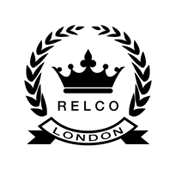What was it like to be a Mod in the ‘60s in the UK?
The 1960s in the UK were a time of cultural revolution and social change, and at the heart of this transformation was the Mod subculture. Emerging from the post-war era, Mods defined themselves through music, fashion, and a desire to break away from the traditional norms of their parents’ generation. Being a Mod in the ‘60s was more than just a style or a hobby; it was a way of life. This blog post will explore what it was like to be a Mod in the ‘60s, highlighting the key aspects that made this subculture unique and influential.
What are the Mod Fashion Statements
For Mods, fashion was a fundamental part of their identity. They were meticulous about their appearance, favouring sharp, clean-cut styles that set them apart from the more rugged looks of the Rockers and other youth subcultures:
-
Tailored Suits:
Mods were known for their immaculate, slim-fitting suits of high-quality fabrics like mohair. These suits often featured narrow lapels and a three-button style, emphasising a sleek and modern look.
-
Casual Wear:
On less formal occasions, Mods sported button-down shirts from brands like Ben Sherman, knitwear, and slim-fit trousers. Fred Perry’s polo shirts and Levi’s jeans were also staples.
-
Footwear:
Shoes were polished and often included desert boots, loafers, or brogues. Every detail of their outfit was carefully chosen to exude rebellion and style.
-
Parkas:
To protect their stylish clothing, Mods wore fishtail parkas, often adorned with patches and badges, while riding their Vespa scooters.
Did Mods have eccentric hairstyles?
Despite the rebellious fashion, the Mods were also very clued up about their polished-up appearances when it came to their slick hairstyles. Whether they were a slicked-back pompadour/quiff held together with sugar water or a shaggy mop-top, they were easy to identify whilst out and about. The pompadour and quiff have transcended their origins in the 60s and become timeless classics. Their enduring appeal can be attributed to:
-
Versatility:
These hairstyles can be adapted to suit various hair lengths and textures, making them accessible to a wide audience.
-
Cultural Significance:
Associated with iconic figures and subcultures, these styles carry nostalgia and rebellion that continues to resonate.
-
Modern Adaptations:
Contemporary barbers and hairstylists have reinvented these looks, incorporating modern techniques and variations to keep them relevant.
The original Mods’ hairstyles have left a lasting impact on fashion and culture. Old-school styles would later evolve into wing-cuts and Mod tops. Their signature looks continue to inspire and influence modern trends, highlighting their ability to stand the test of time. The wing-cut and the Mod top have remained symbols of style and individuality, whether seen on the runways, in music videos, or on the streets.
How did Music Influence Mod Culture
Music was the lifeblood of the Mod scene. It shaped their identity and provided a soundtrack to their lives. Mods quickly embraced American rhythm and blues, Ska, jazz and soul. Artists like John Coltrane, Miles Davis, and later, Marvin Gaye and Otis Redding were central to the Mod playlist. Homegrown British bands like the Who, the Small Faces and the Kinks resonated with Mods, blending R&B influences with British rock. These bands captured the Mod ethos and often became symbols of the movement. Mods frequented clubs like the Scene in Soho and the Flamingo, where they danced to the latest records. These clubs were social hubs where Mods could showcase their latest moves and connect with like-minded individuals.
What is the Mod Legacy?
While the original Mod movement began to fade towards the end of the 1960s, its impact remained significant. The Mods’ fashion, music, and attitudes influenced subsequent youth cultures and continue to be celebrated today. The Mod revival in the late 1970s, led by bands like The Jam, brought the Mod style and ethos back into the limelight. Today, Mod fashion and music continue to inspire, with many retro enthusiasts and new generations embracing the timeless appeal of the Mod look.
The movement had a lasting influence on British culture, from music and fashion to attitudes towards youth and modernity. It represented a shift towards a more individualistic and expressive society, laying the groundwork for future cultural movements.
Modern Revival and Impact
By embracing the spirit of unity and individuality, young mods are not just preserving the legacy of the past but also adapting it to the contemporary cultural landscape. This revival is more than a nostalgic nod; it is a dynamic movement that influences current trends and inspires future generations.
The modern mod resurgence underscores the subculture’s enduring relevance. As young mods continue to innovate while honouring tradition, they leave an indelible mark on the cultural landscape of the 21st century. This blend of old and new showcases the mod movement’s ability to evolve while maintaining its core identity, proving that true style and cultural movements are timeless. It’s pretty rare in this day and age to find someone still rocking the Modernist subculture, “aesthetic” or “core”, in regards to looks. However, in the music world, it is still loved by people of all ages, especially those who grew up within or in that particular era. You’ll also find music students studying at institutions like B.I.M.M (endorsed by the Who) have adopted Mod culture in their fashion choices.
